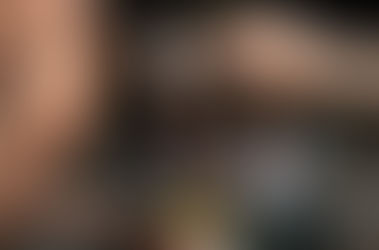Polka magazine
- Antoine Boesch

- Feb 28, 2014
- 3 min read
Today was a great day, and also rather a relief. Polka magazine (www.polkamagazine.com) number 24 was labelled as "November 2013 - January 2014" (well, actually, "novembre 2013 - janvier 2014", as it's in French). So I had been going to the same 2 or 3 newsagents practically every day since the beginning of February so see whether it had come out. The newsagents may have started thinking I was angling for an adult magazine which I didn't quite dare to reach for on that top shelf. Anyway, here it finally was this morning.
It's a really great mag, focusing on actual photography (photo journalism) rather than gear and technique, which I believe has never actually featured since the title launched in 2008 as a quarterly.
So I sit down with a glass of wine any my eagerly awaited mag, open it, and the advertisements on in the first few pages are successively for: a Cartier watch, a Louis Vuitton watch, Chanel clothes, Hermes clothes (cool photo I must admit), BMW (the one I want is the classic one just behind the new one advertised in the picture !), Dior perfume, Roederer champagne, a Tag Heuer watch, and Berlutti shoes.
Hardly run-of-the-mill; in fact, the only one of these brands featuring among my possessions is Hermes, in the form of a single belt that's starting to look just a bit scruffy.
The question that springs to mind is: why ? More to the point, why do the advertisers assume, probably correctly, that Polka magazine's readership features mostly higher-income individuals ?
The reality is that today everyone owns a camera, whether a smartphone, a top-of-the-range DSLR or anything in between (check out "out of the phone" which publishes books of photos taken with smartphones). And a good photographer with something to show or say will do just as well with either. Billions of photos are shot every day, posted and shared on the web. Everyone is a photographer, and photography in its simplest form is dirt-cheap.
Moreover, Polka magazine focuses on photo journalism (featuring a lot of street-photography for instance), not on on pretentious "fine art" photography; this mag isn't sniffy or "artsy-fartsy", which is why I like it so much.
So how is it that something everybody reads (a magazine), devoted to something everybody does (photography), with unpretentious (though high quality) content, apparently appeals essentially to a higher-income crowd ?!
This is truly baffling.
I wondered whether, in the heyday of photojournalism, there actually were such publications as Polka magazine, about photo journalism. Truth is, I've absolutely no idea, since I was rather too young at the time. I doubt it, however: top quality photo journalism was where it ought to be, featuring prominently in a large number of news publications, illustrating news stories. So there probably wasn't much need, or market, for a magazine about journalism. Today, great photo journalism is left struggling to find the place it ejoyed and deserves, and looking for alternate avenues to exist and market itself.
One of these avenues is art. Hence the burgeoning of museum or gallery exhibitions devoted to photo journalism, for instance.
But it's really (often very litterally) the same photos: one day,then, several are grouped to illustrate a story in a newspaper, news magazine, or a magazine such as National Geographic. Next day, today, the very same photos might be enlarged, individually framed, exhibited and sold for vast sums. As another example, think of Helmut Newton: his (amazing - I'm a fan) photos graced the pages of fashion magazines - and today you'd need to rob a small bank to purchase one or two framed prints.
These same photos have suddeny become art. and yet they haven't changed - what has is only how we look at them. Which quite neatly demonstrates that art isn't an inherent quality in any object, but lies rather in our relationship to that object and how we look at it.
Our time is in many ways a fantastic one for photography, with everybody having access to a huge array of creative tools to explore the medium. Yet at the same time, photography seems to have been shoe-horned into a box labelled "ART" and thus artificially removed, in large swathes, from popular use or access.
What a shame for William Klein's great, colour street-photos of Brooklyn in the second half of Polka's new issue !




















Comments